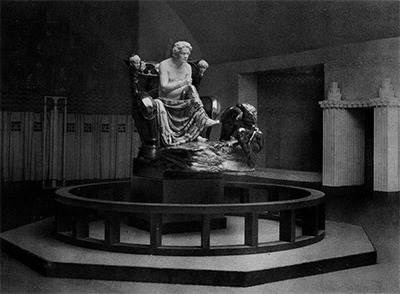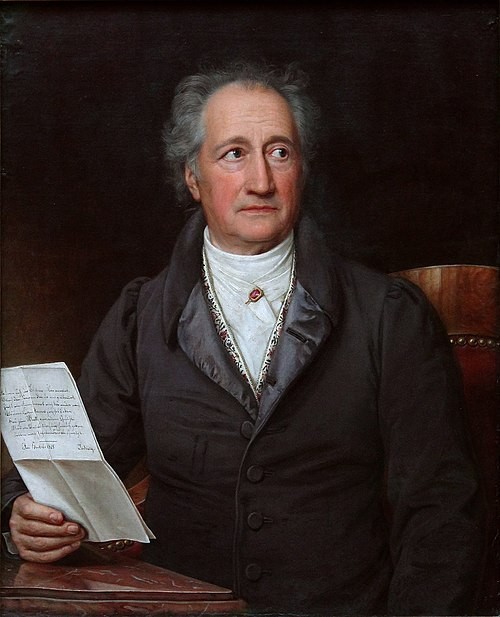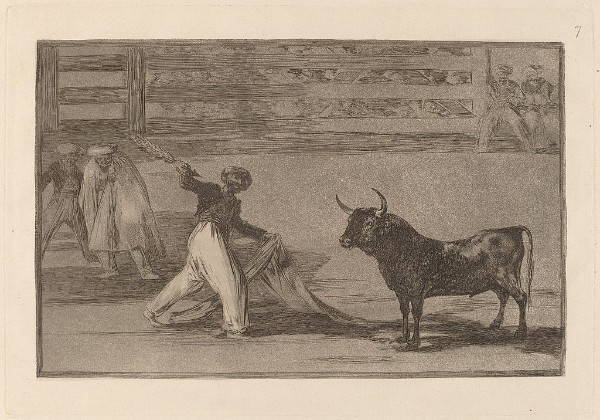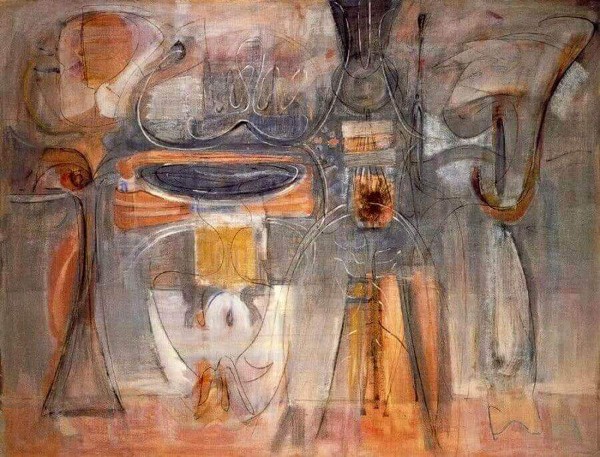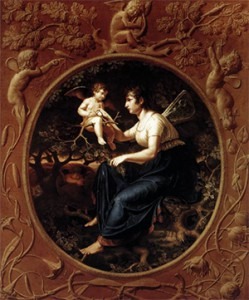
Philipp Otto Runge (1777-1810) – The Lesson of the Nightingale, 1805
Often, we can establish many direct connections between painters and composers, not only in the portraits of composers, such as Busoni’s paintings of Boccioni and Oppenheimer, Itten’s portrait of Otto Klemperer, and Schönberg’s self-portrait, but also in the depiction of musicians, instruments and music sheets – the visualization of the invisible — the very essence of music itself. Many painters, particularly those of the Romantic era, considered music to be the highest and purest of the arts which, through its immediacy, touches spirit and soul. During their time, music in painting was generally expressed figuratively, whereas later on in the 19th century and especially over the course of the 20th century, music’s effusiveness and abstraction paralleled the move towards abstraction in painting.
One of the pertinent examples in the beginning of the 19th century is Runge’s painting ‘The Lesson of the Nightingale’, 1805. For Runge, music is harmony such as in a beautiful poem where words are like music. For him music appears in beautiful paintings, in beautiful architecture or sculpture — in everything which can be expressed through lines. Here, he echoes the concept of synesthesia, emphasized by the French poet, Charles Baudelaire (1821-1867) in his poem ‘Correspondances’, where ‘perfumes, colors and sounds respond to each other’ (‘Les parfums, les couleurs et les sons se répondent’) — which, like music, affect the spirit and senses.
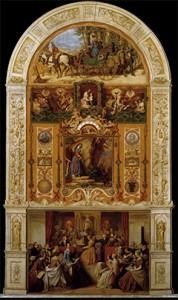
Moritz von Schwind (1804-1871) – A Symphony, 1852
Even before the rediscovery of J.S. Bach, which in general can be attributed to Mendelssohn’s 1829 performance of the St. Matthew’s Passion in Berlin, Runge constructed his painting according to the principle of the ‘fugue’. Inspired by Klopstock’s Ode ‘The Lesson’, the central oval part of the painting shows Psyche, the symbol of the nightingale, instructing Amor in playing the flute – the motif is then repeated and varied in the rectangular, grisaille border surrounding the oval. For Runge the musical phrase which centres the composition and then reappears in its variations, as memory of the whole replicates the musical construct of the fugue.
Beethoven: Choral Fantasy
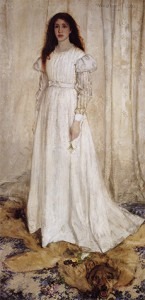
James McNeill Whistler (1834-1903) Symphony in White, 1862
In general, the fugue and the symphony, the crowning musical achievements of polyphony and harmony, become synonymous with musical painting which is often reflected in painting’s titles, such as in Whistler’s painting ‘Symphony in White, No. I –The White Girl, 1862. Here, Whistler emphasizes the different shadings of the color white, depicting the young woman and her surroundings – her hair is the only differing element. For Whistler, music is the poetry of sounds, painting the poetry of colors, and the theme of the painting has nothing to do with either the harmony of sounds or the harmony of color.
From the beginning of the 20th century onward, colors, associated with different sounds in music compositions, become ‘the counterpoint’ in art, and, according to Kandinsky, open immense possibilities in transforming the paintings themselves into musical compositions – pure art in the service of the spirit. This concept will be further explored in forthcoming articles.

